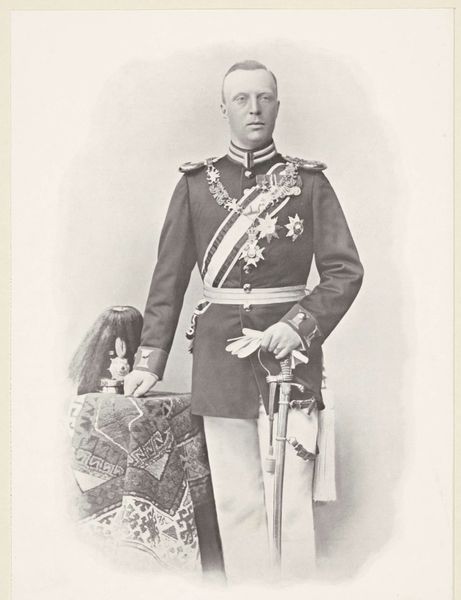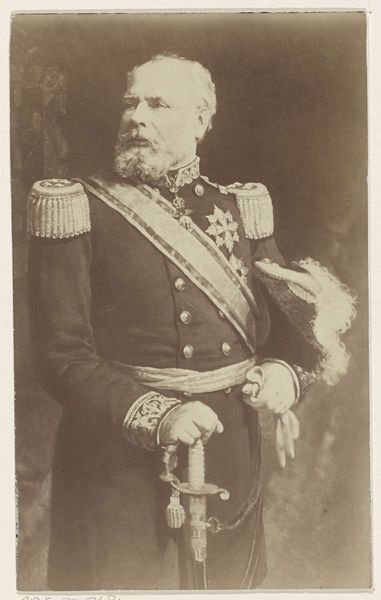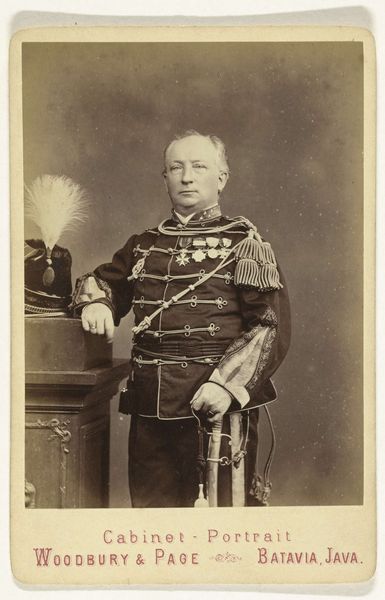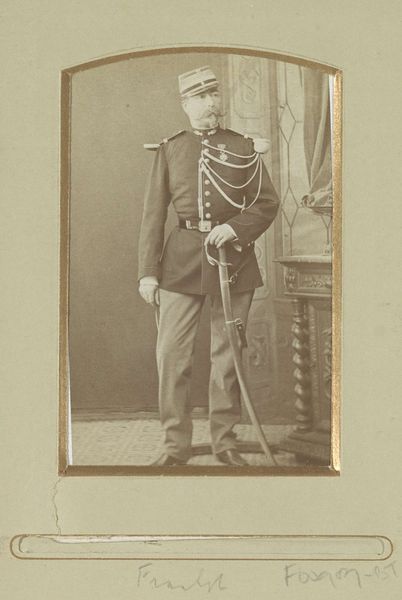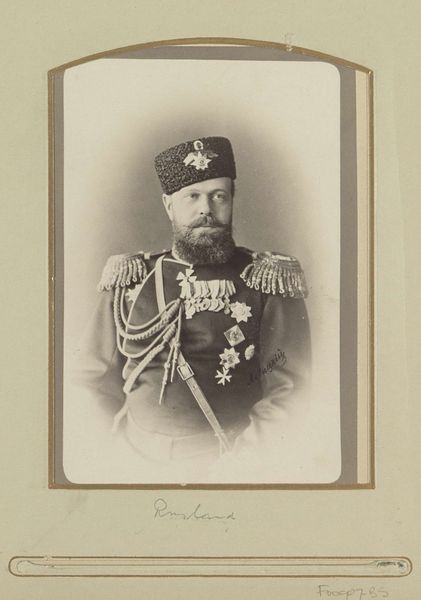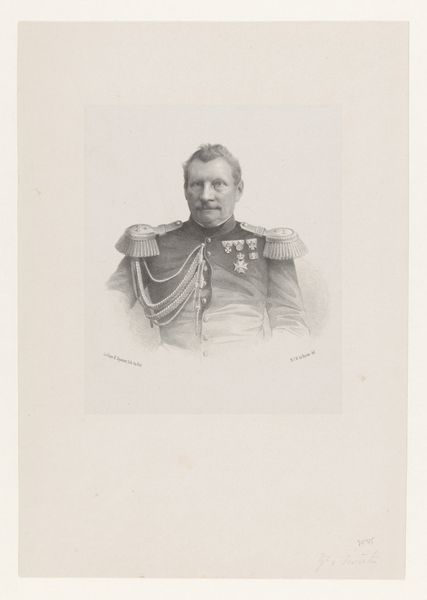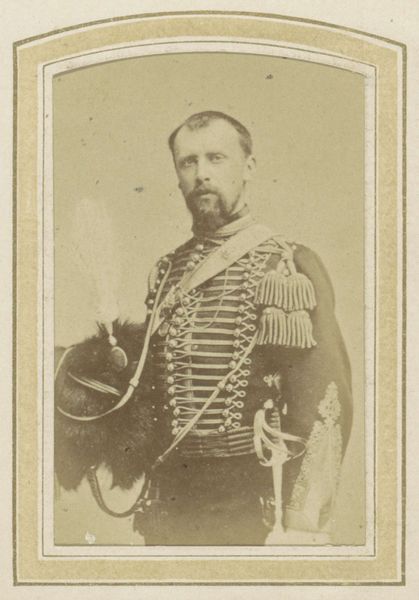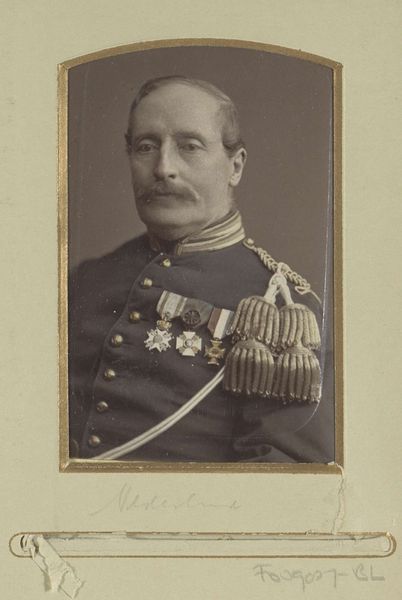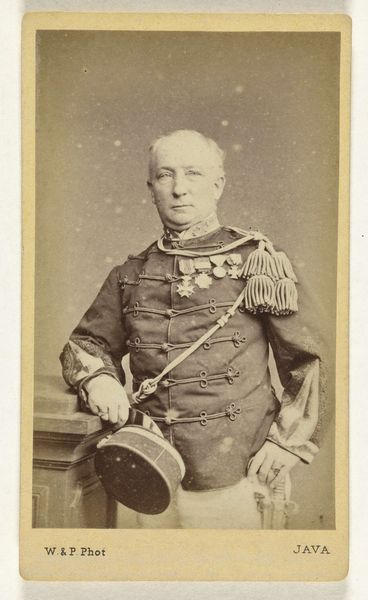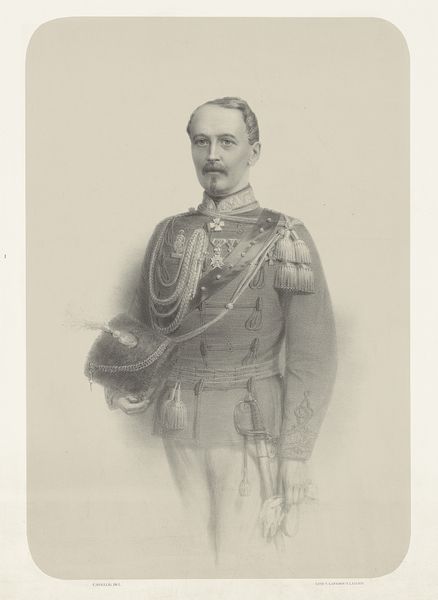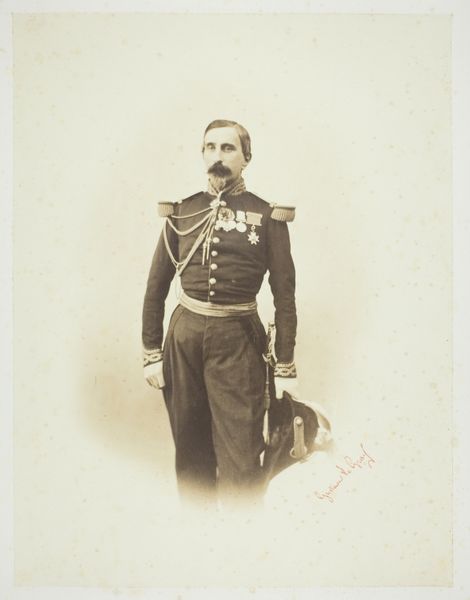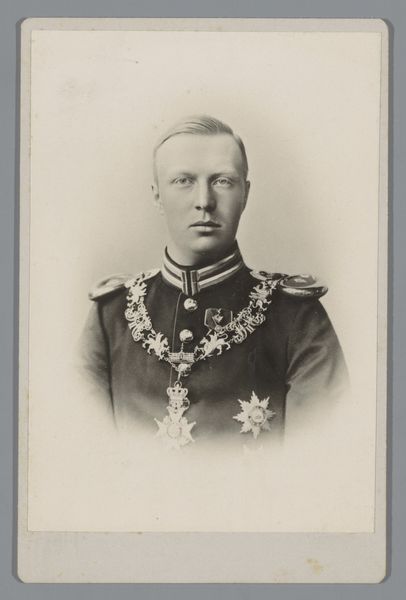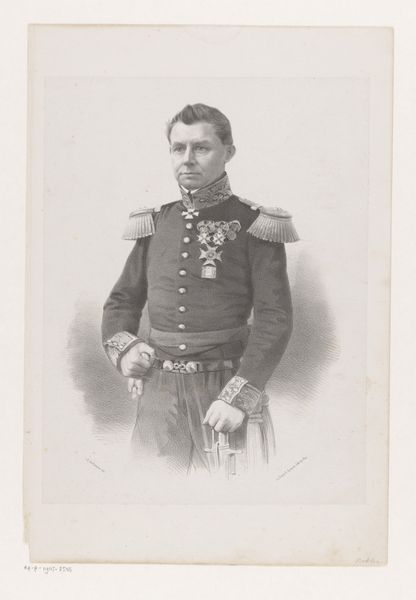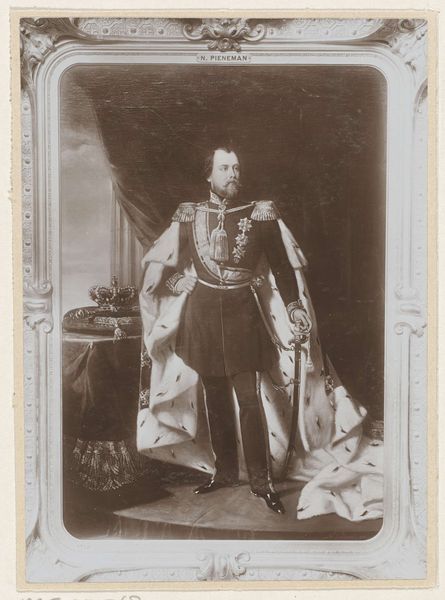
photography
#
portrait
#
photography
#
historical photography
#
historical fashion
#
realism
Dimensions: height 218 mm, width 155 mm, height 283 mm, width 203 mm
Copyright: Rijks Museum: Open Domain
Curator: This portrait, taken sometime between 1900 and 1910, is entitled "Portret van Hendrik van Mecklenburg-Schwerin" and is by M.M. Couvée. It's part of the Rijksmuseum's collection. Editor: It exudes a somber elegance. The light, even though faded, articulates the texture of his military garb, creating an almost sculptural effect. It seems more staged and symbolic than natural. Curator: Exactly. Looking beyond the formal elements, one can see a representation of power and the performance of imperial identity in the early 20th century. This photographic image, with its muted tones, reveals the stark realities of its cultural period—a time of rising nationalism and militarism. Editor: I agree; the high contrast adds drama, and the figure's carefully posed hand emphasizes an aristocratic order through careful consideration of line and form. Curator: Right, Hendrik’s pose and the photographic conventions speak to the entrenched societal structures. Consider how his stance communicates an authority invested with historical weight—this photo normalizes a certain type of masculine, aristocratic presence within the cultural discourse of that era. Editor: You are so right. I focused on the artistry of lighting and lines at first but his figure really underscores the complex network of cultural norms reproduced in art. I had noticed that the light reflected off those highly polished buckles, but I didn't think of how he represented something beyond himself, his power. Curator: His medals and formal dress underscore this too, representing both individual honor and a place within a powerful institution that shapes European history at the turn of the century. The details carry echoes of a crumbling old order as the war period approached. Editor: Well, thanks to this dialogue, I think I better understand this man in this portrait! It is all captured very well in shades and shadow and makes it really stick in one's memory. Curator: Me too. This photograph becomes much more fascinating once one examines what kind of ideology of masculinity, aristocracy, and empire this was so crucial for both portraying and upholding at this time.
Comments
No comments
Be the first to comment and join the conversation on the ultimate creative platform.
